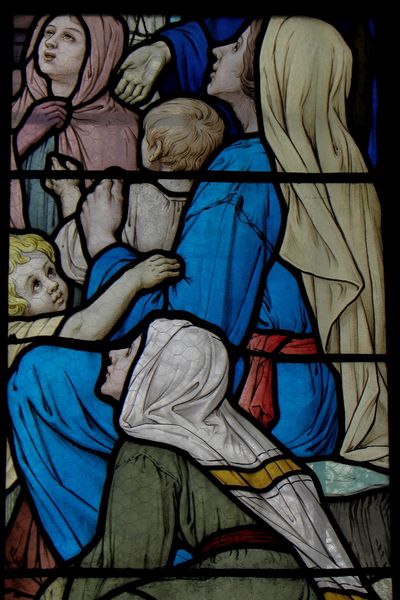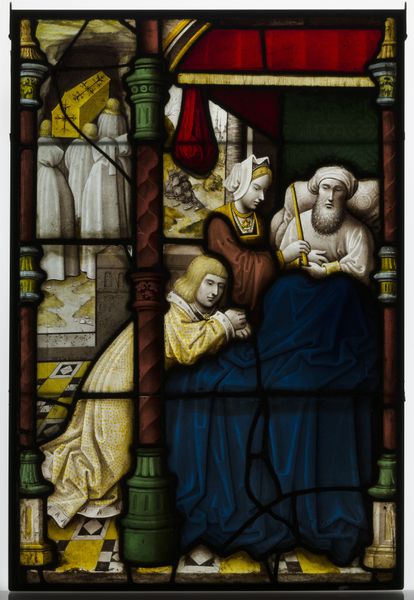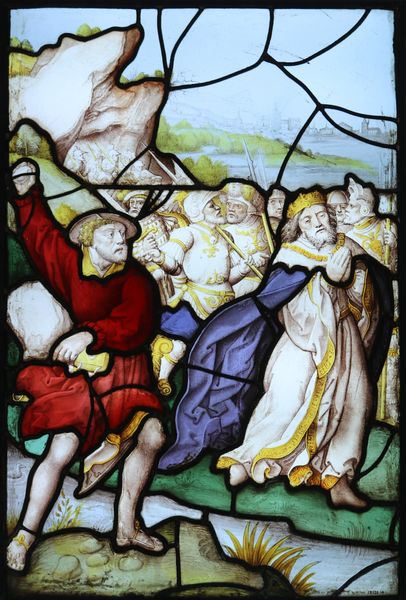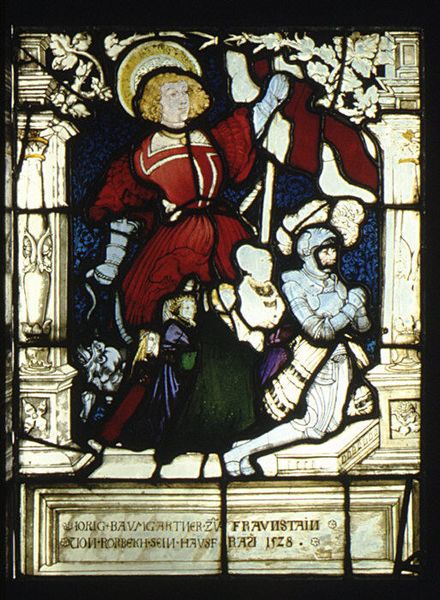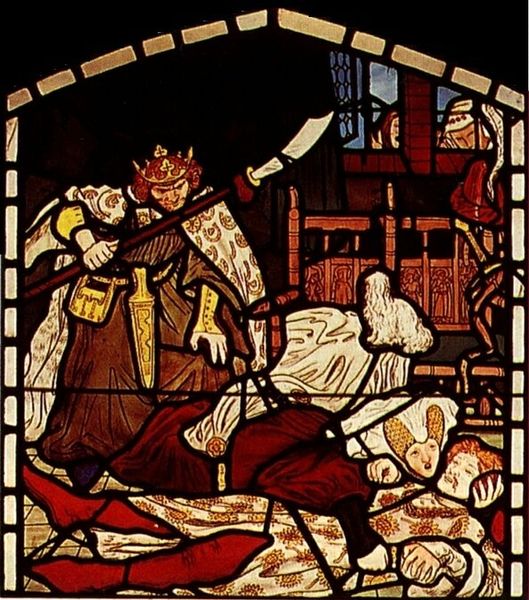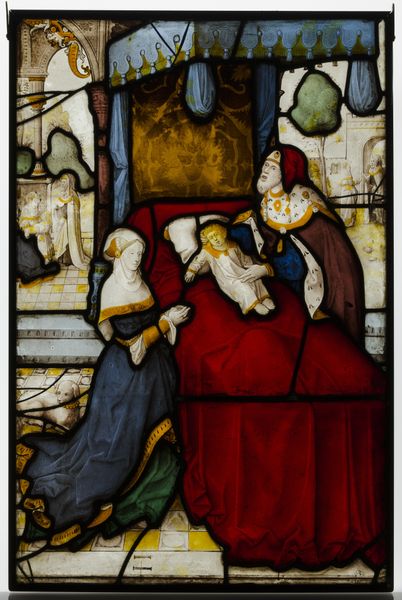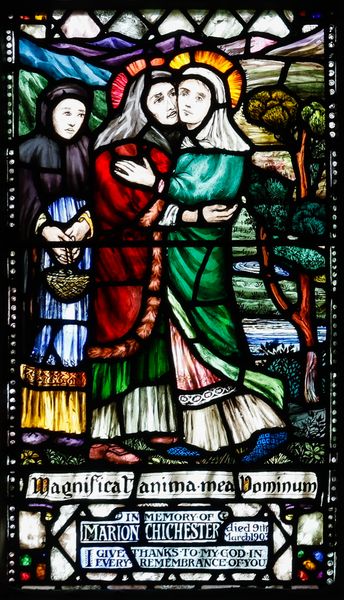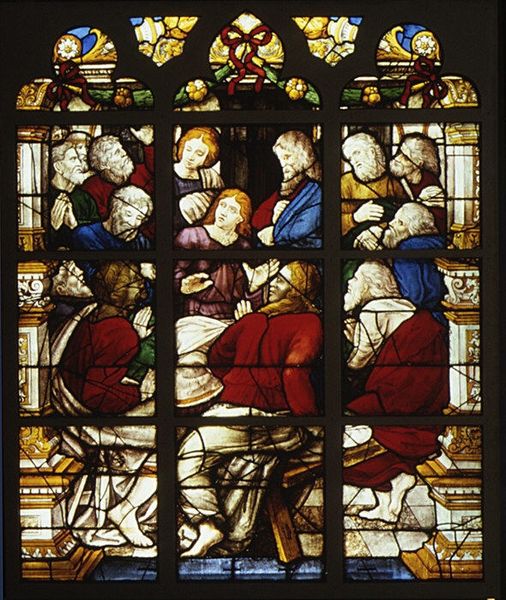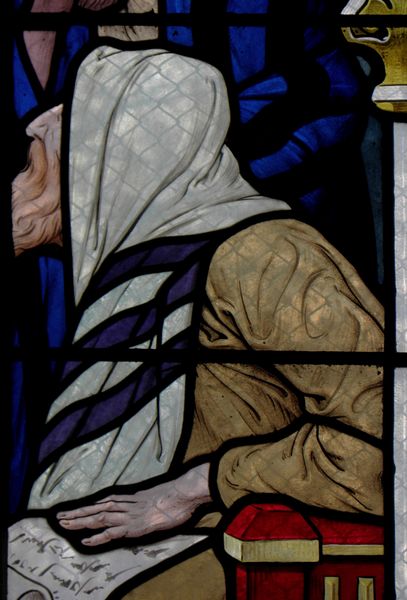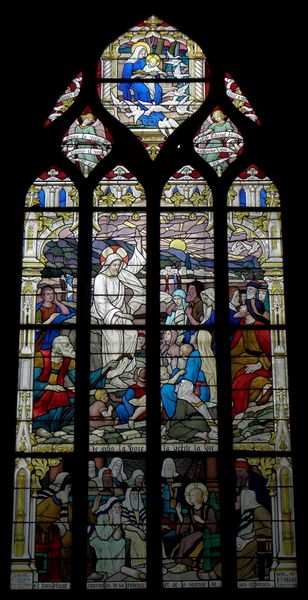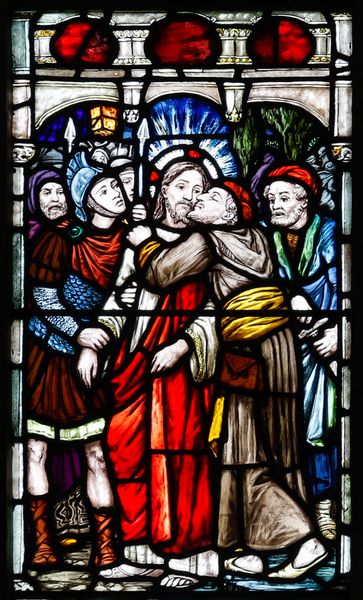
The Levite in the Parable of the Good Samaritan (one of a set of 12 scenes from The Life of Christ) 1520 - 1535
0:00
0:00
tempera, painting, glass
#
tree
#
medieval
#
narrative-art
#
tempera
#
painting
#
death
#
landscape
#
figuration
#
glass
#
men
#
history-painting
#
decorative-art
Dimensions: Overall: 26 × 19 1/2 in. (66 × 49.5 cm)
Copyright: Public Domain
Curator: I'm immediately struck by the drama held within such a small space—like a tiny stage setting for human indifference. Editor: Indeed. What we have here is a stained-glass panel depicting "The Levite in the Parable of the Good Samaritan," part of a series crafted by Jan Rombouts between 1520 and 1535. It's a narrative pulled straight from the Gospels, exploring themes of compassion, or rather, the lack thereof. Curator: The composition is so telling, isn’t it? The dense forest to the left, almost pressing in on the vulnerable figure, versus the... open avoidance of the Levite to the right. Is it me, or does the light feel as though it's physically recoiling from the scene of suffering? Editor: That's a fascinating read! The light plays a critical role, typical of stained glass as a medium, casting different auras on the figures and highlighting the Levite’s crisp, almost arrogant, robe in contrast to the muted palette used to render the injured man. This, I believe, underscores the social commentary inherent in the parable itself – the unexpected source of charity. Curator: It almost feels too staged. I'm distracted by how everyone poses for a photo. There is a flatness and frontality that robs it of urgency. It could be said, however, that it adds a sense of theatricality. It underlines the staging and artificiality of religious morality, and it becomes satirical somehow. Editor: I find it intriguing how Rombouts, working in this Northern Renaissance style, manages to subtly critique social mores through religious storytelling. These panels originally adorned a religious setting, influencing those who had an encounter with this imagery on the nature of their own social responsibility. Curator: It's a powerful reminder, then, that even the most familiar narratives can be repurposed to reflect—or, indeed, refract—the values of the society that embraces them. Editor: Absolutely. This panel, although small, prompts us to consider how public art reinforces the politics of seeing, prompting dialogues that have resonated for centuries. It’s an amazing example of how historical events continue to echo across social contexts.
Comments
No comments
Be the first to comment and join the conversation on the ultimate creative platform.
